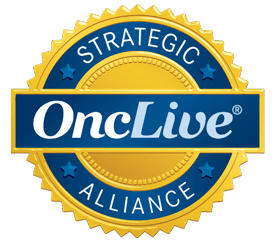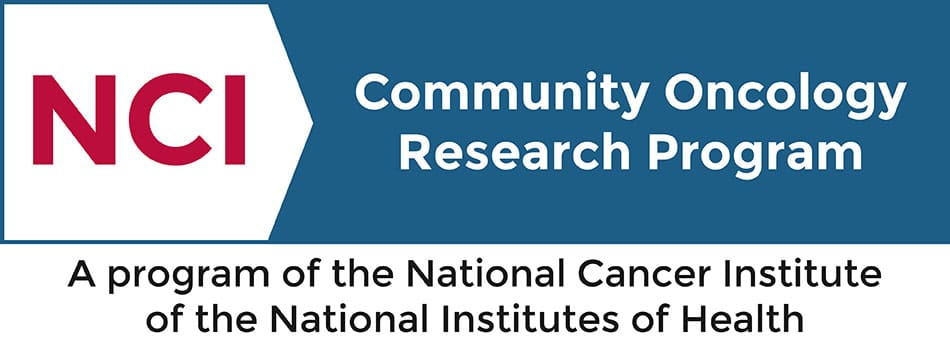If you or a loved one is dealing with lung cancer, you are not alone, and the team at Capital Health is here alongside you every step of the way. The National Cancer Institute at the National Institutes of Health states that lung cancer represents 12.9% of all new cancer cases identified. Capital Health Cancer Center offers lung cancer screening, diagnosis, and treatment plans customized for each individual patient to equip them with what they need to fight this battle.
Understanding what lung cancer is, what the symptoms are, how to seek diagnosis, and what treatment options are available, can prepare you or your loved one and help answer some questions during this confusing and difficult time.
Understanding Lung Cancer
You know how crucial your lungs are to your everyday life, but knowing the makeup of your lungs can help you understand lung cancer a little more.
The lungs are some of the most critical organs in your body, functioning by taking in oxygen and getting rid of carbon dioxide. There are two sponge-like organs within your chest; the right lung has three sections called lobes, and the left lung has two lobes. As you breathe in air through your mouth or nose, the air travels through the trachea (or windpipe), which divides into tubes called the bronchi.
The air then enters the lungs and the bronchi divide into smaller bronchi. Smaller branches, or bronchioles, form and the air then goes into small sacs at the end of the bronchioles called alveoli. The alveoli absorb the oxygen into your blood when you inhale air and remove the carbon dioxide from the blood as you exhale.
Lung cancers usually begin in the cells that line the bronchi, as well as parts of the lung such as the bronchioles or alveoli.
Different Types of Lung Cancer
When it comes to a diagnosis of lung cancer, you’ll need to understand the difference between the two types: non-small cell lung cancer (NSCLC) and small cell lung cancer (SCLC). The stronger of the two is small cell lung cancer (SCLC). Though both of these diseases are in the lungs, they are very different.
Non-Small Cell Lung Cancer
The majority of lung cancers are NSCLC, making up about 80 to 85%. Although these types of cancers begin to form in different cell types, they’re grouped together because treatment and prognoses are often similar. The main subtypes of NSCLC include the following:
Adenocarcinoma
Adenocarcinoma is typically found in the outer parts of the lungs. It affects mostly current or former smokers, however it’s the most common type of lung cancer found in non-smokers. It occurs in the cells within the lungs that normally secrete substances. This type of lung cancer is more commonly found in women than men and affects more young people than other types of lung cancer. There is usually a good chance that adenocarcinoma will be found before it spreads. Those who are suffering from this type of cancer tend to have a better outlook than those with other types.
Squamous cell carcinoma
Squamous cell carcinoma is typically found in the central part of the lung. It begins in the squamous cells which line the inside of the airways.
Large cell (undifferentiated) carcinoma
Large cell carcinoma can be found in any part of the lung. This is one of the most difficult types of lung cancers to treat, as it tends to grow and spread quickly, which can make it harder to treat.
There are a few other types of NSCLC that are less common. These include adenosquamous carcinoma and sarcomatoid carcinoma.
Small Cell Lung Cancer (SCLC)
Small cell lung cancer, or SCLC, is much less common than NSCLC and about 10-15% of all lung cancers are made up of this type. It’s sometimes referred to as oat cell cancer.
NSCLC is more easily treated, as it is often diagnosed before it has spread. SCLC grows more quickly, with about 70% of people having cancer that spreads to other parts of the body before SCLC is diagnosed. It can return following treatment, however this is on a case by case basis.
Lung Tumors
Another way cancer can affect the lungs is when tumors form. When cells grow out of control, cancer can begin to form and create a tumor. Lung carcinoid tumors form from neuroendocrine cells, a special kind of cell found in the lungs.
The two types of lung carcinoid tumors are known as typical and atypical.
About 9 out of 10 lung carcinoids are typical carcinoids. These tumors tend to grow slowly and do not usually spread beyond the lungs. They also do not seem to be linked with smoking.
Atypical carcinoids grow more rapidly and are more likely to spread to other organs. They are much less common than typical carcinoids and may be found more often in people who smoke.
There’s also the chance that other types of cancers that are affecting various organs will spread into the lungs. However, these cancers are not considered lung cancer. For example, if someone has pancreatic cancer that spreads into the lungs, it’s still pancreatic cancer. Treatment will be based on where it began.
Risk Factors
Unfortunately, there’s no way that lung cancer can be completely prevented. There are, however, certain risks that are associated with the disease.
According to the Centers for Disease Control and Prevention, the most widely researched risk factors include the following:
- Smoking and secondhand smoke
- Radon and asbestos exposure
- Family history
- Radiation therapy to the chest
- Radiation therapy is often used to treat those who suffer from breast cancer.
These risk factors are still being researched by scientists. Some people who are diagnosed with lung cancer have not experienced any of these risk factors, but they are still important to be aware of. If you find yourself dealing with these risks, bring them up to your physician to be safe.
Diagnosis and Screening
The diagnosis process at Capital Health is designed with your comfort in mind first. We understand how difficult this time can be, so it’s our goal to put you at ease by keeping you informed every step of the way.
Our multidisciplinary team approach, including doctors, nurses, and other expert health care professionals, ensures you’re always taken care of at Capital Health. We provide the most comprehensive lung screening in the region at our Cancer Center, including our Lung CT Screening Program. And with our cutting edge diagnostics, CT screening takes less than 10 seconds to complete.
The advanced diagnostics and screening will provide peace of mind that your testing is accurate. From there, your team of doctors will determine what comes next for you.
Treatment
There is not a one-size-fits all treatment method for lung cancer, that’s why our team of doctors will work with you to create an individualized program based on your diagnosis. They will review a variety of treatment options to develop a comprehensive plan that is convenient for patients, as well as referring physicians.
Typical treatment options for lung cancer include chemotherapy, radiation therapy, and surgery.
- Chemotherapy can be delivered by a pill or liquid, a vaccine, and, most often, through an IV needle that is connected to your bloodstream. These destroy any cell that is growing fast, which can cause side effects. If you have bad or uncomfortable side effects, your doctor may order a blood test to find out if you need a lower dose, or if you need longer breaks between doses.
- Radiation Therapy and Stereotactic Radiosurgery provides many options that may be offered with greater convenience and efficiency than chemotherapy, as well as fewer side effects.
- TrueBeamTMLinear Accelerator was offered first in the region by Capital Health Center. It operates by rotating around the patient to deliver a prescribed radiation dose from nearly any angle.
- CyberKnife® Robotic Radiosurgery takes treatment of benign and malignant tumors to a new level by providing access to previously unreachable and untreatable tumors throughout the body when radiation therapy is indicated.
We know this is an uncertain time for you, so it’s our responsibility to provide as much guidance as possible throughout your journey. Visit the Capital Health website to learn more about cancer care services or call us at 609-537-6363



